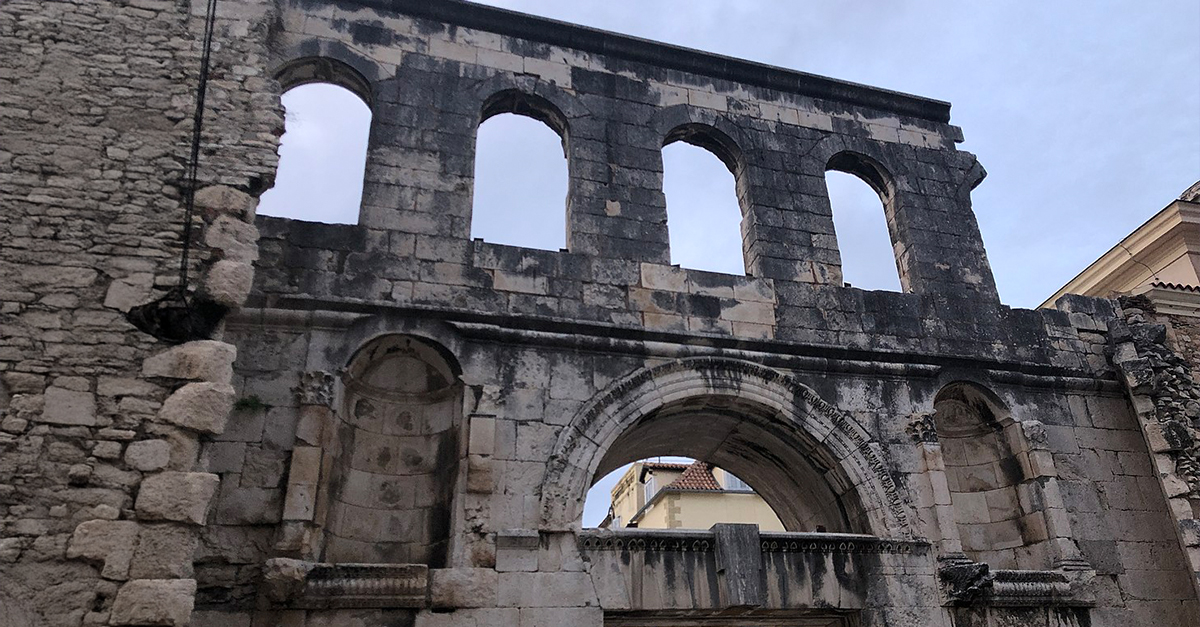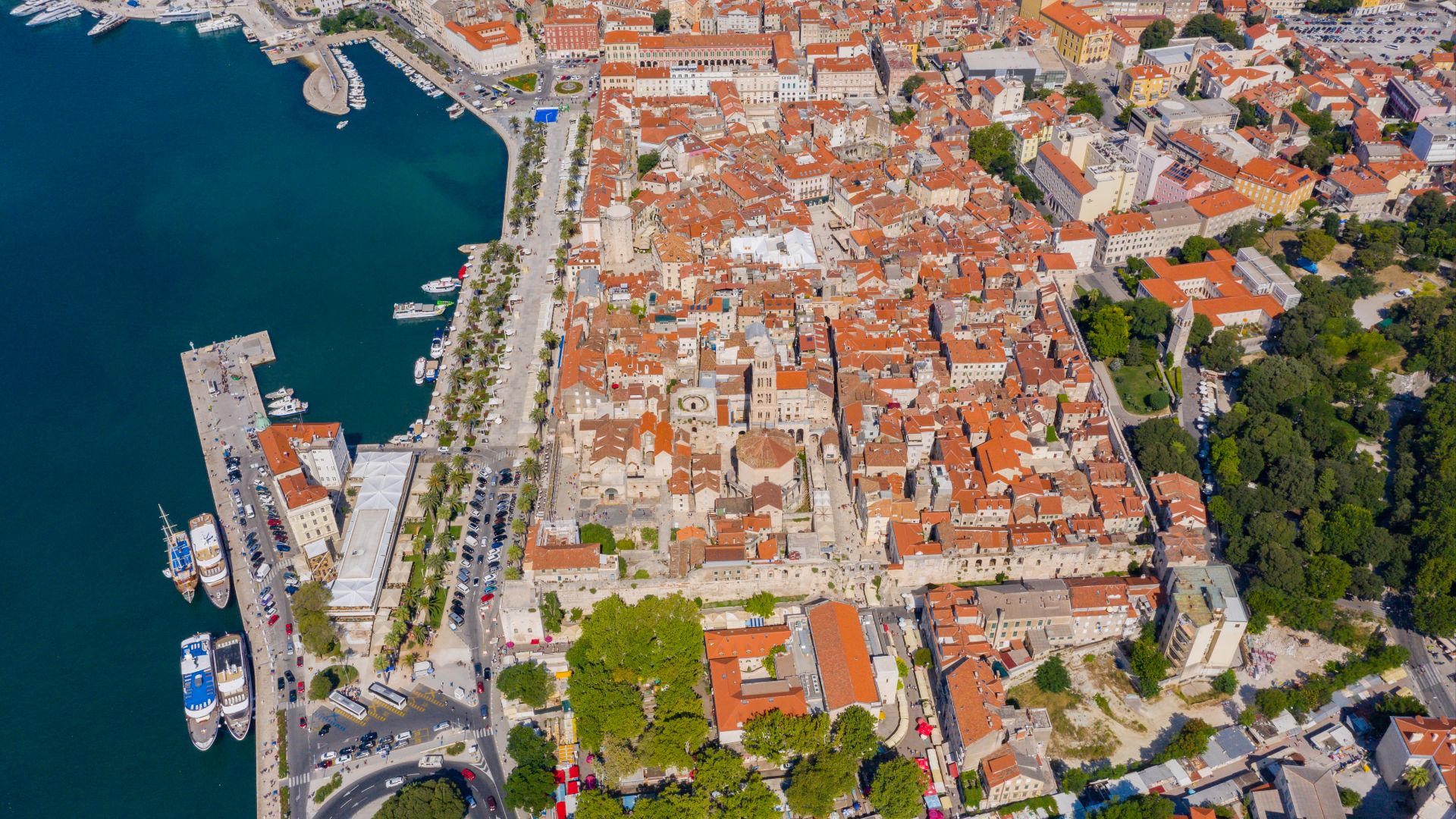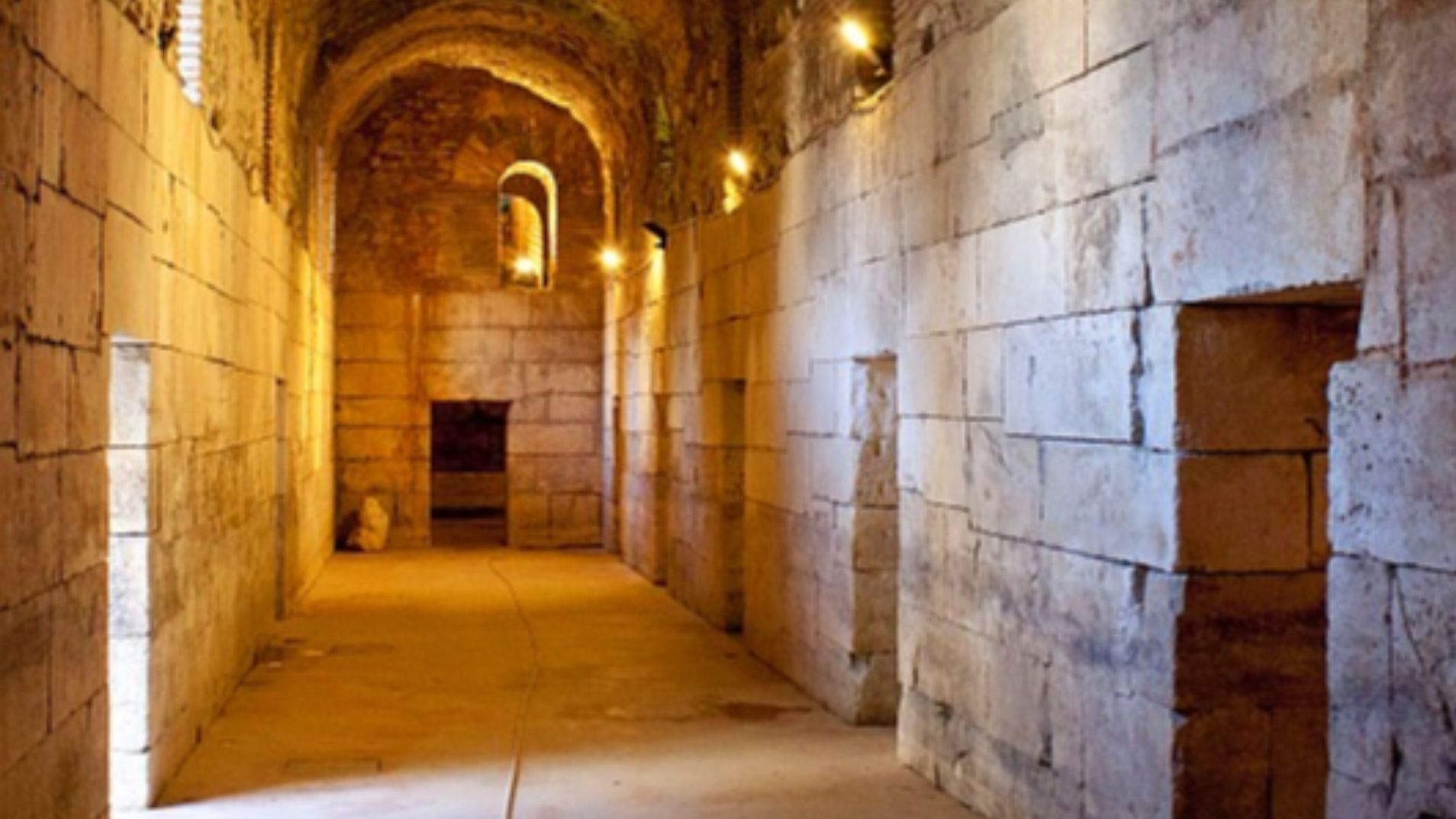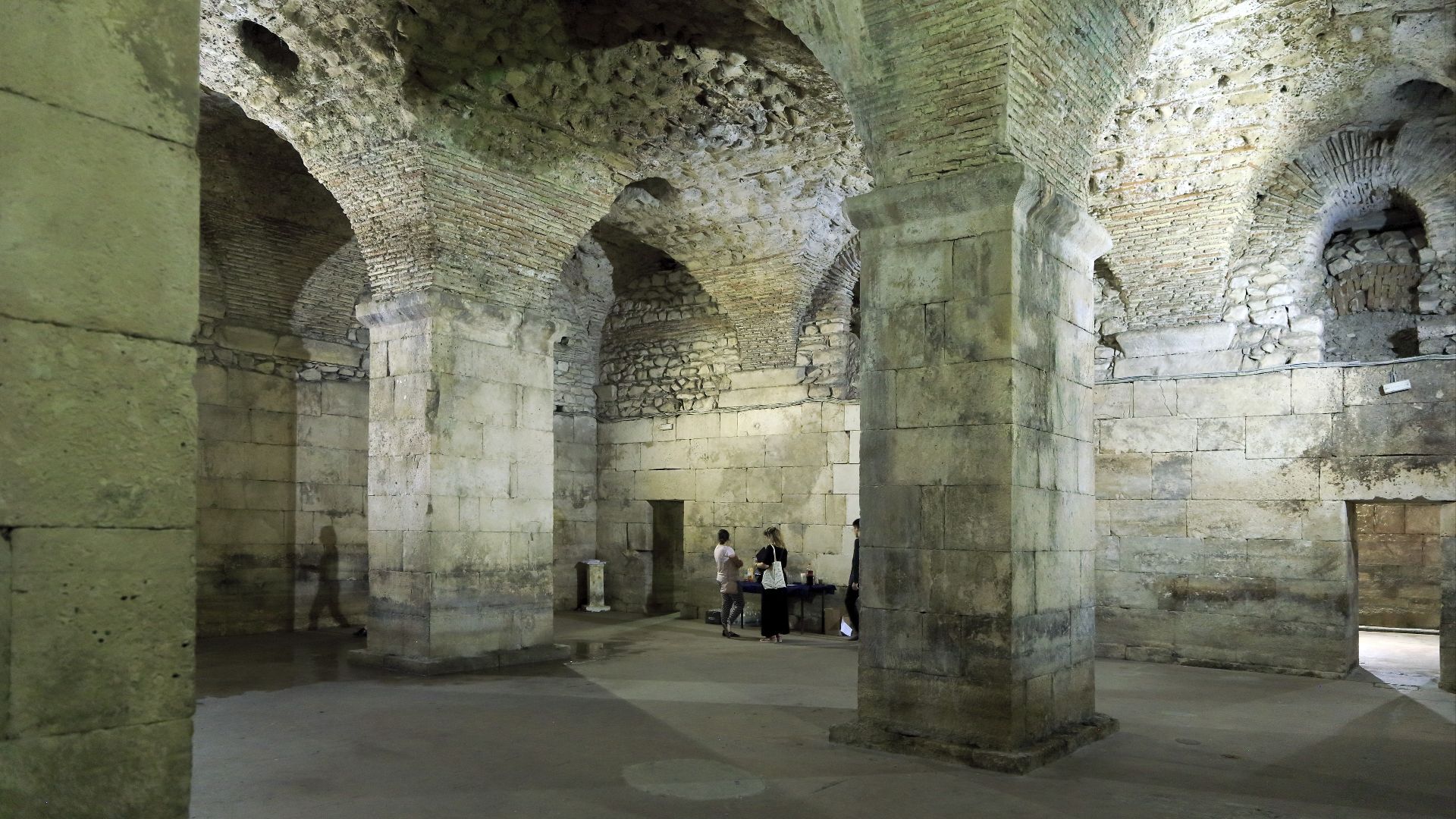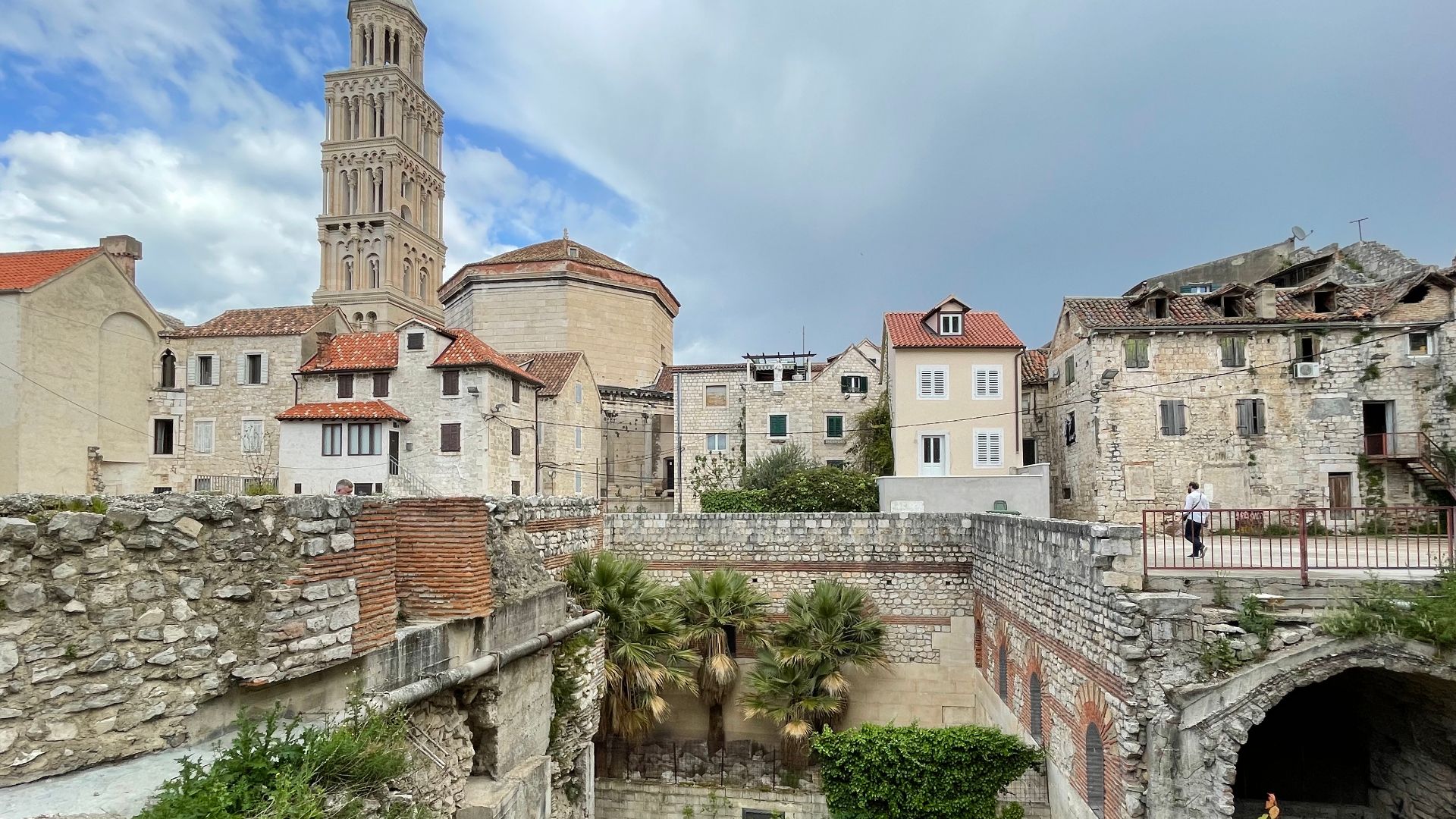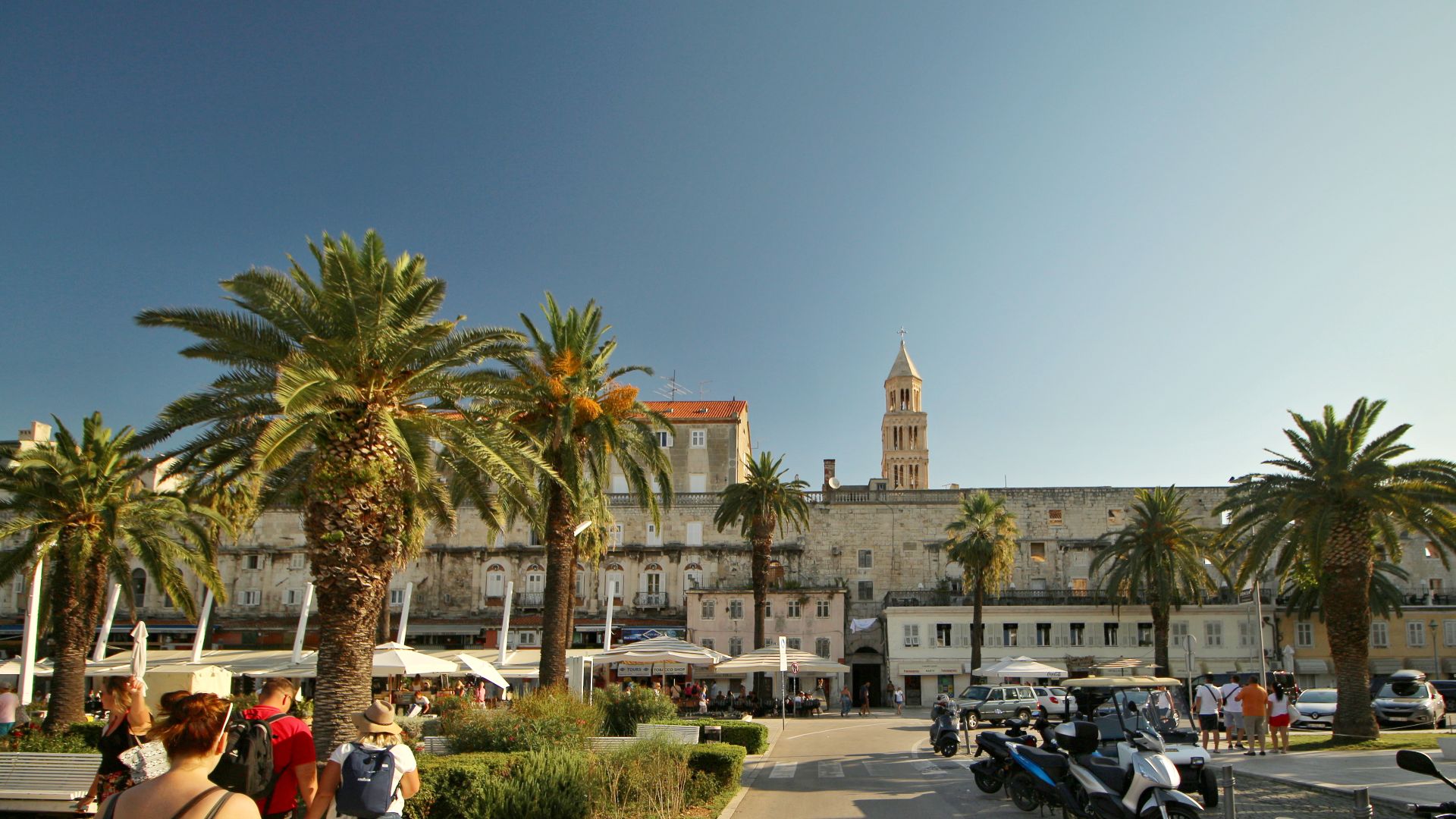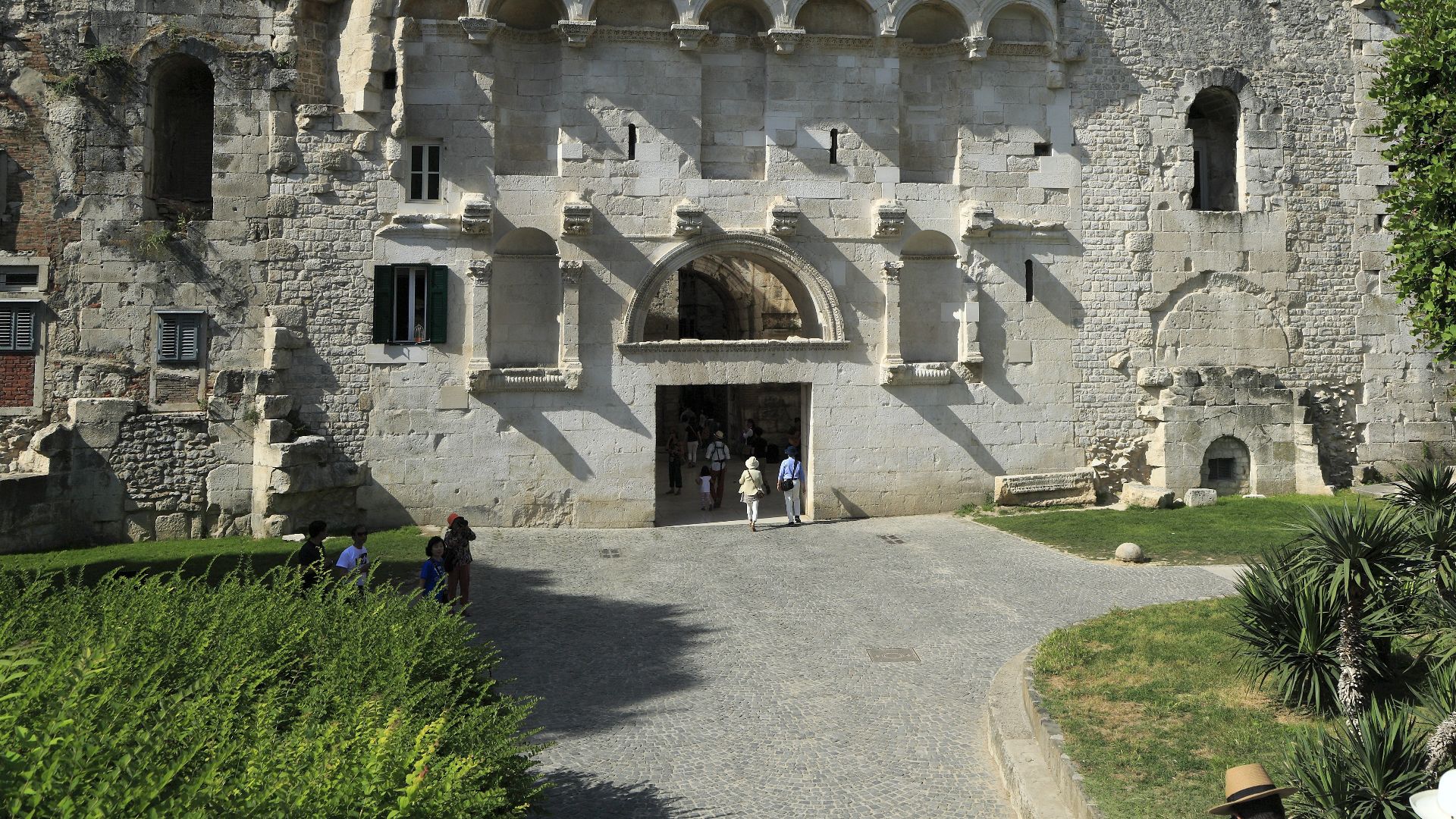A Hidden Corridor Beneath Split’s Roman Heart
In 2024 archaeologists in Split, Croatia, made a shocking discovery beneath the modern city streets: a subterranean passageway leading into the cellars of Diocletian’s Palace. This tunnel, previously buried for centuries, gives us a tangible link to the lives of Roman guards and the inner workings of the emperor’s domain, reshaping how visitors can understand Split’s layered history.
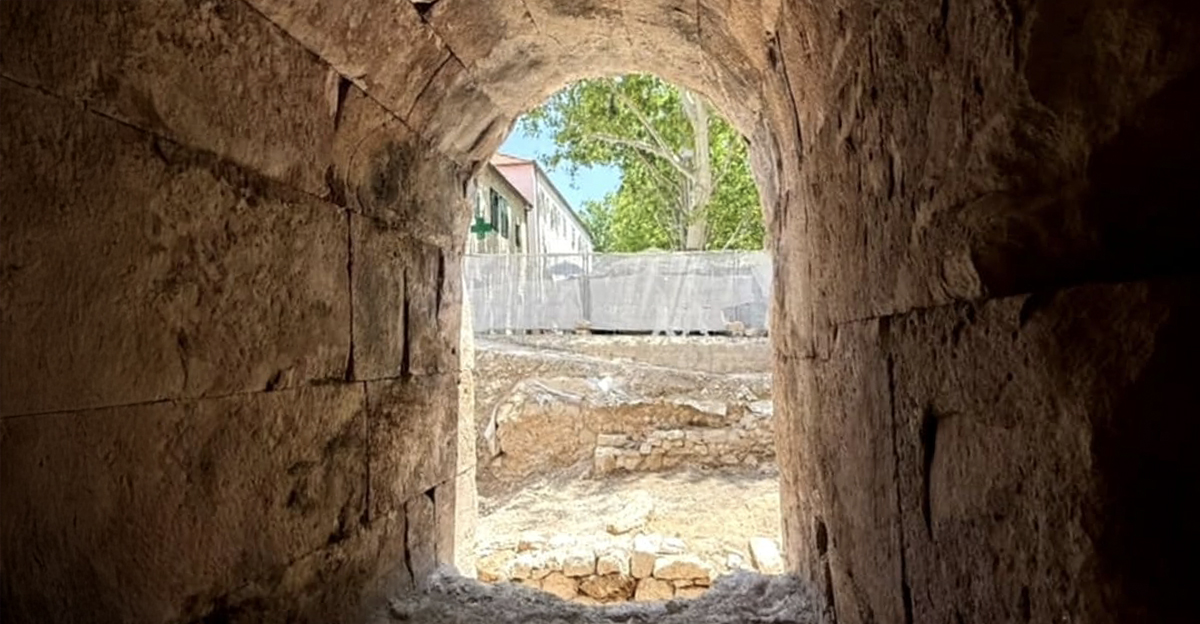
The Palace That Became A City
Diocletian’s Palace, built in the late 3rd century AD for the retiring emperor Diocletian, makes up about half of present‑day Split’s Old Town. Over nearly two millennia it evolved from imperial residence to a fortress to a lively urban district, with its sturdy masonry and vaults weathering centuries of change.
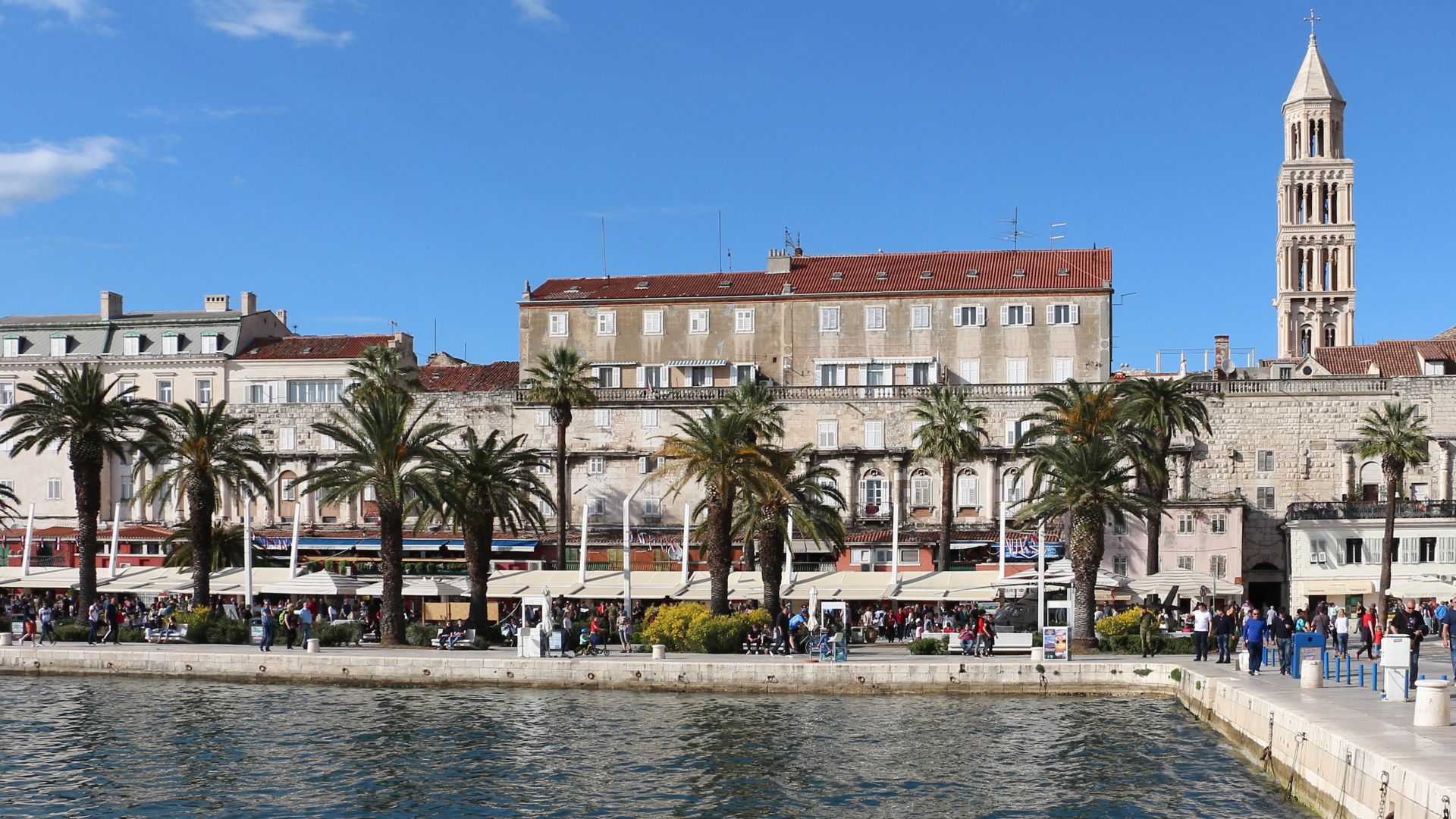 Bernard Gagnon, Wikimedia Commons
Bernard Gagnon, Wikimedia Commons
What They Discovered
During renovation work on Hrvojeva Street, archaeologists dug up a previously hidden guard passage leading from the eastern rampart into the palace cellars. This corridor had been sealed up and forgotten for more than 500 years, but had long ago served as a vital conduit for imperial and later ecclesiastical activity.
Technical Details Of The Passageway
The newly found route joins up the city‑street level with the cellars underneath the palace’s eastern wall, likely via a set of stairs that led upward to the emperor’s quarters. It lies embedded in the rampart and was discovered under the limestone pavement of modern Split.
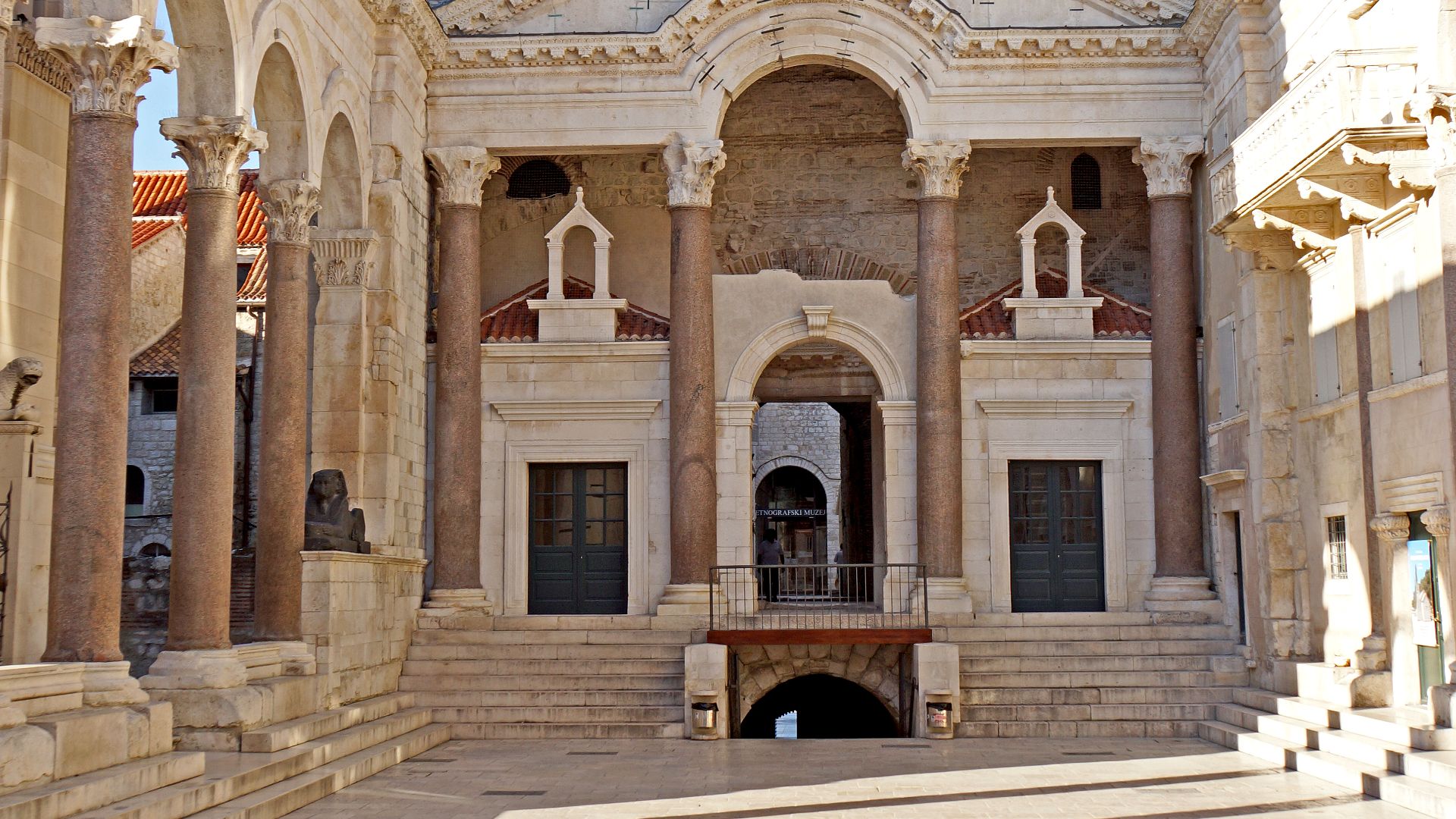 Dennis G. Jarvis, Wikimedia Commons
Dennis G. Jarvis, Wikimedia Commons
Why It Was Hidden For So Long
The passage was most likely closed off during the Ottoman era when ramparts were thickened and towers demolished for the city’s defence. Over time the entrance got progressively buried beneath debris and urban surface, until today’s restoration work revealed its presence.
Historical And Imperial Significance
The cellars of Diocletian’s Palace are some of the best‑preserved Roman substructures of their kind found anywhere in the world. This passage gives us new insight into how security moved around and operated in this labyrinthine fortress‑like imperial residence.
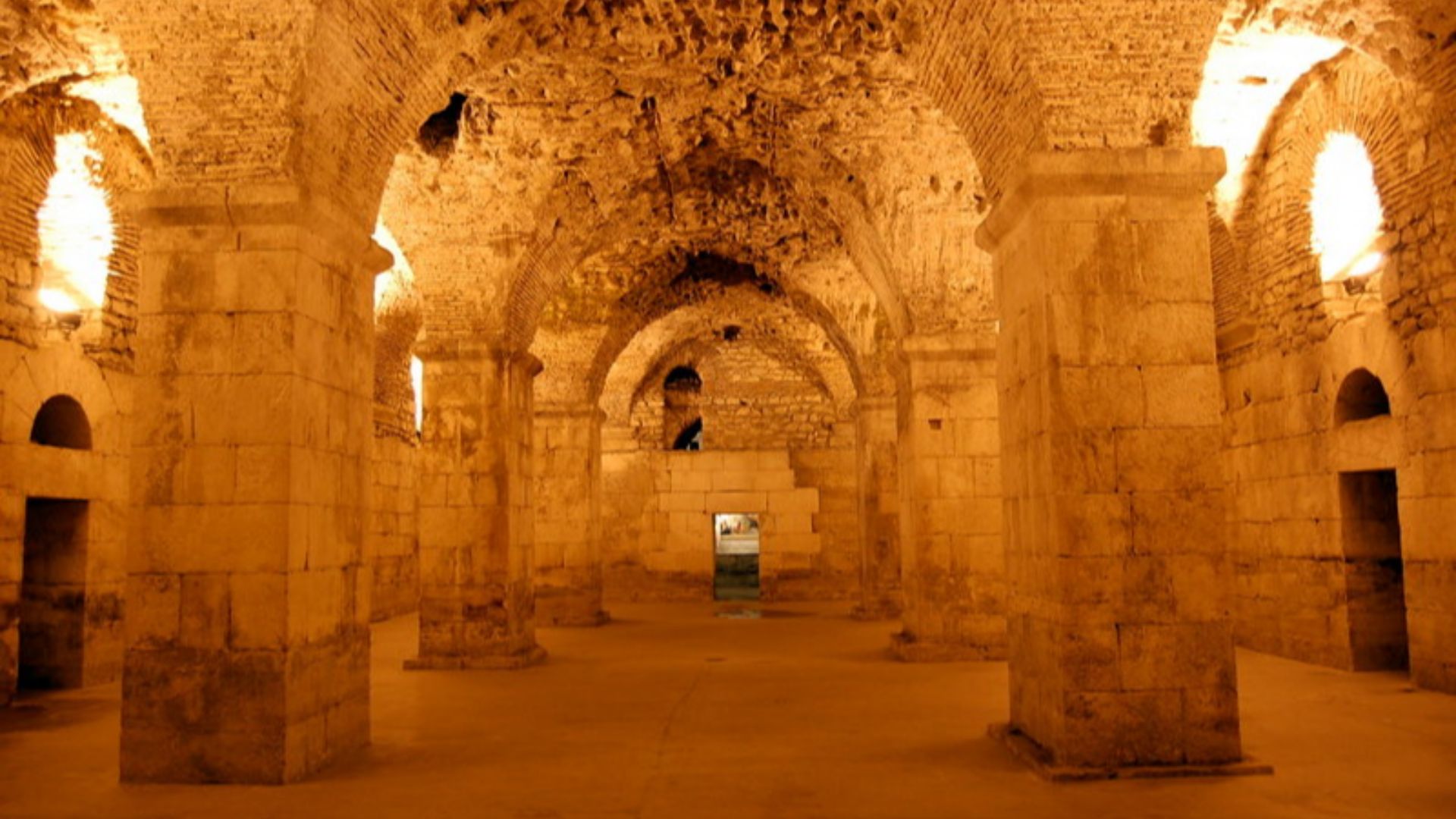 Alecconnell, Wikimedia Commons
Alecconnell, Wikimedia Commons
Insight Into Roman Daily Life
Instead of being a purely ceremonial palace, the discovery suggests a bustling operational centre, complete with guards patrolling, stairs connecting cellars to living quarters, and strategically placed corridors leading under ramparts. The infrastructure highlights the logistical sophistication of a residence that served double-duty as a fortified stronghold.
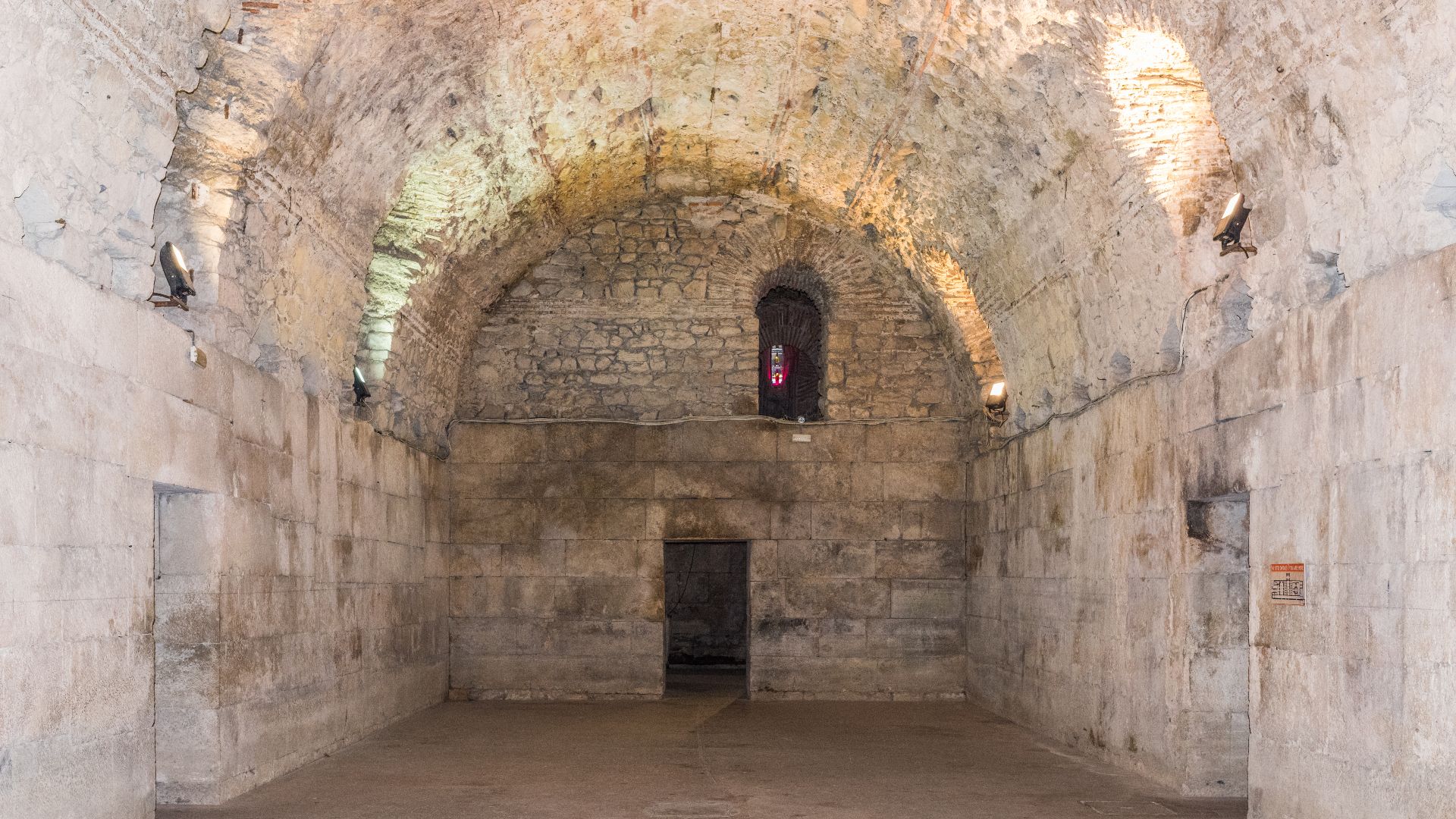 Bengt Nyman from Vaxholm, Sweden, Wikimedia Commons
Bengt Nyman from Vaxholm, Sweden, Wikimedia Commons
The Modern Archaeological Effort
This discovery came about from a conservation program on Hrvojeva Street and the palace walls. Excavation teams cleared away rubble, documented masonry, and mapped out the connection from the street to the basement halls. This teamwork between archaeologists and urban restoration professionals is shaping new visitor routes.
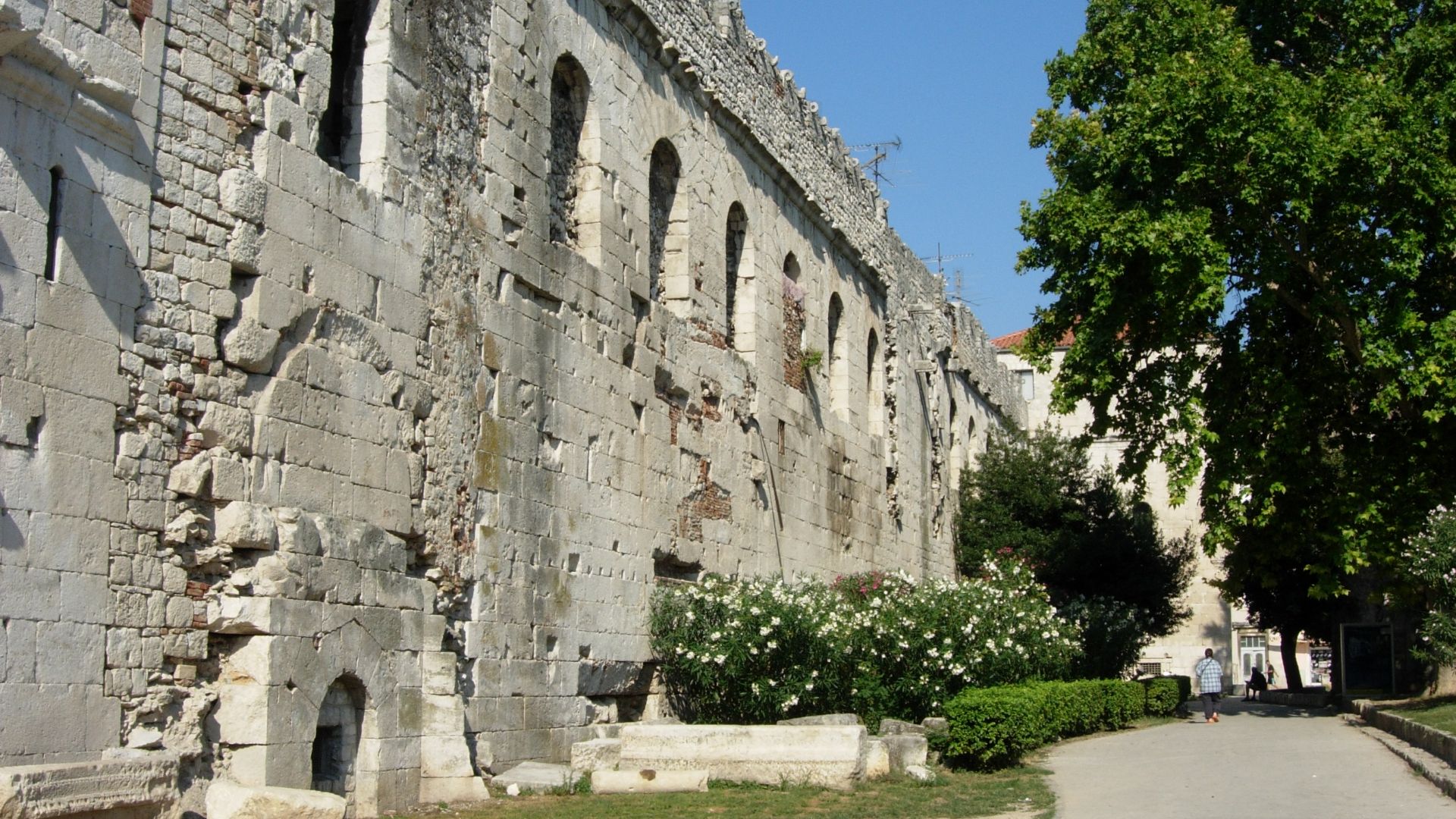 Samuli Lintula, Wikimedia Commons
Samuli Lintula, Wikimedia Commons
Tourism Implications For Split
With the passage opening up as a visitor route, Split has now gained another remarkable attraction: seeing the ancient tunnel adds one more dimension to the palace‑tour experience. For travelers it means an opportunity to step beneath the limestone streets of a city that still stands strong above its redoubtable Roman foundations.
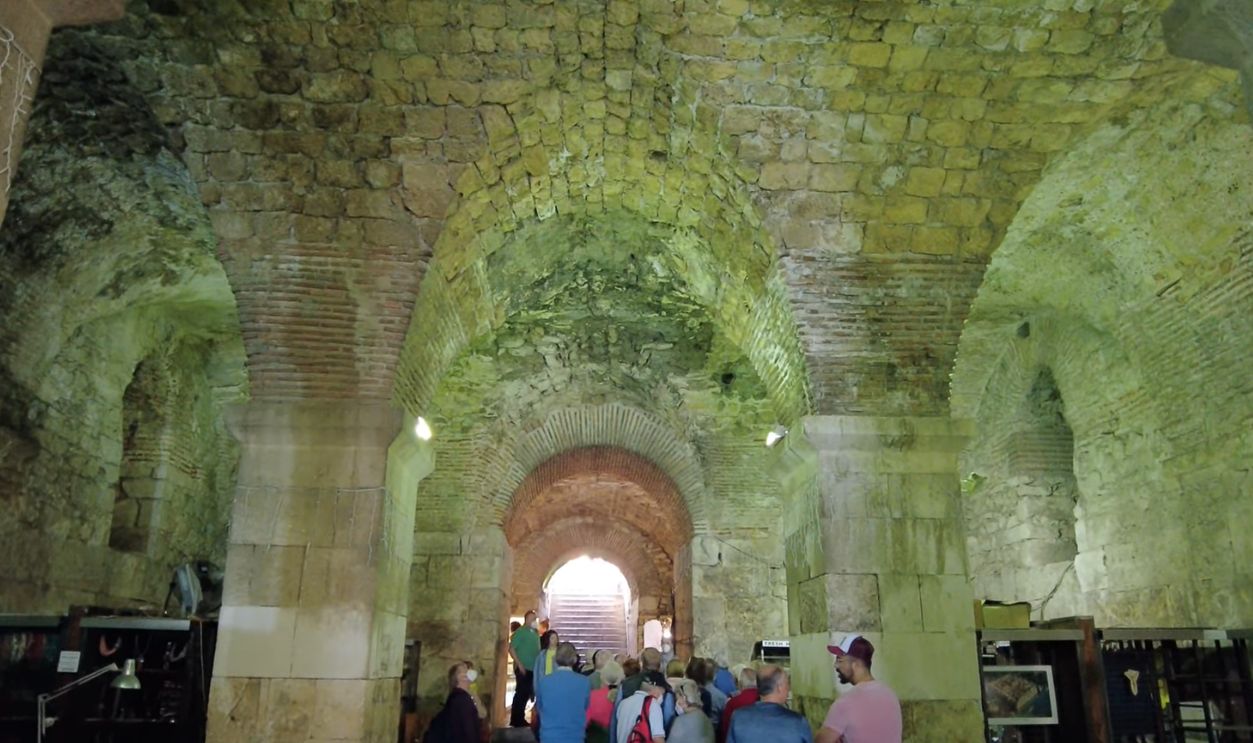 UNDERGROUND TOUR - DIOCLETIAN PALACE | SPLIT, CROATIA, Cityscape Walk
UNDERGROUND TOUR - DIOCLETIAN PALACE | SPLIT, CROATIA, Cityscape Walk
How To Visit The Site
Visitors to Split should head straight to the Old Town and go in through the palace’s cellar halls. There they should ask about access to the newly revealed corridor in the eastern wing. Consider booking a guided tour that highlights this specific feature for full context.
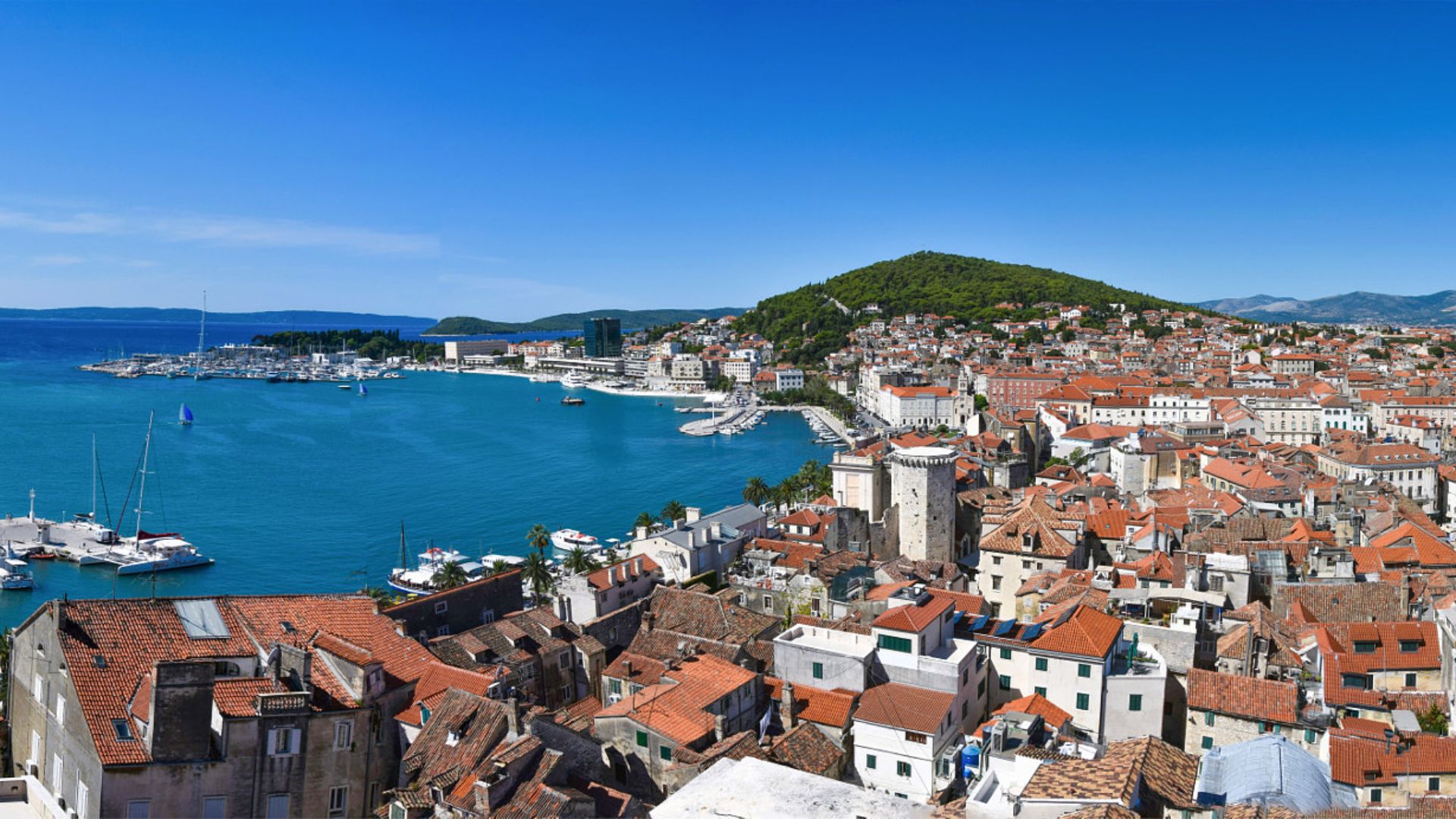 Gerard Stanczak, Wikimedia Commons
Gerard Stanczak, Wikimedia Commons
Conservation And Access Challenges
Opening a medieval or ancient tunnel to the public requires a sensitive design: lighting, stabilization of stone masonry, and visitor safety. Archaeologists stress the need to preserve the passage’s authenticity and its structural integrity.
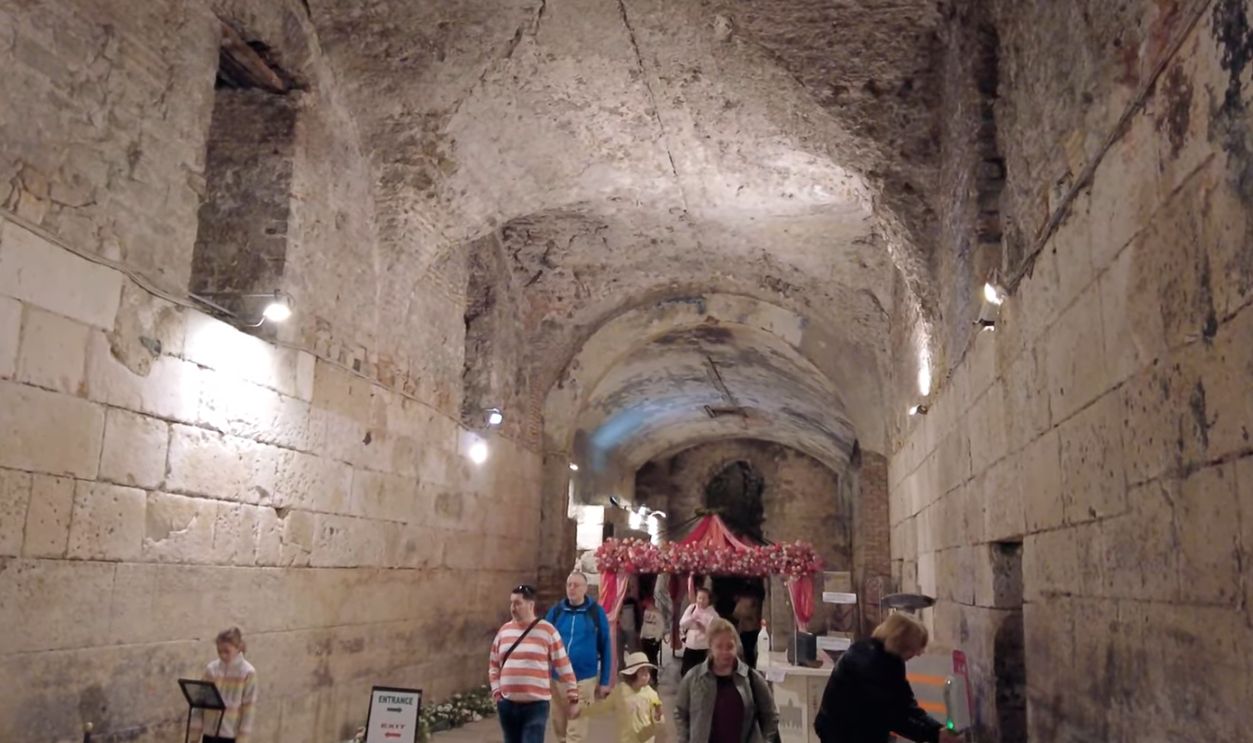 UNDERGROUND TOUR - DIOCLETIAN PALACE | SPLIT, CROATIA, Cityscape Walk
UNDERGROUND TOUR - DIOCLETIAN PALACE | SPLIT, CROATIA, Cityscape Walk
The Passage’s Role In Later History
After the Roman era passed into history the corridor may have been used by medieval bishops and residents of the palace‑turned‑city. This ongoing use from fourth‑century guard route to today’s modern tourist attraction makes the passage an amazing time capsule.
Split’s Urban Layers Uncovered
Split’s Old Town is a layered sequence of ancient, medieval and modern architecture. The passage illustrates how Roman, Byzantine, Venetian and Ottoman influences created the city you see today with all its myriad basements, ramparts, and streets connected across time.
Why These Discoveries Mean So Much
Finding hidden subterranean passageways fundamentally changes how we understand monumental sites: it proves that ancient buildings were living, functional places, and not just ruins to be admired. The passage re-energizes the narrative of Diocletian’s Palace.
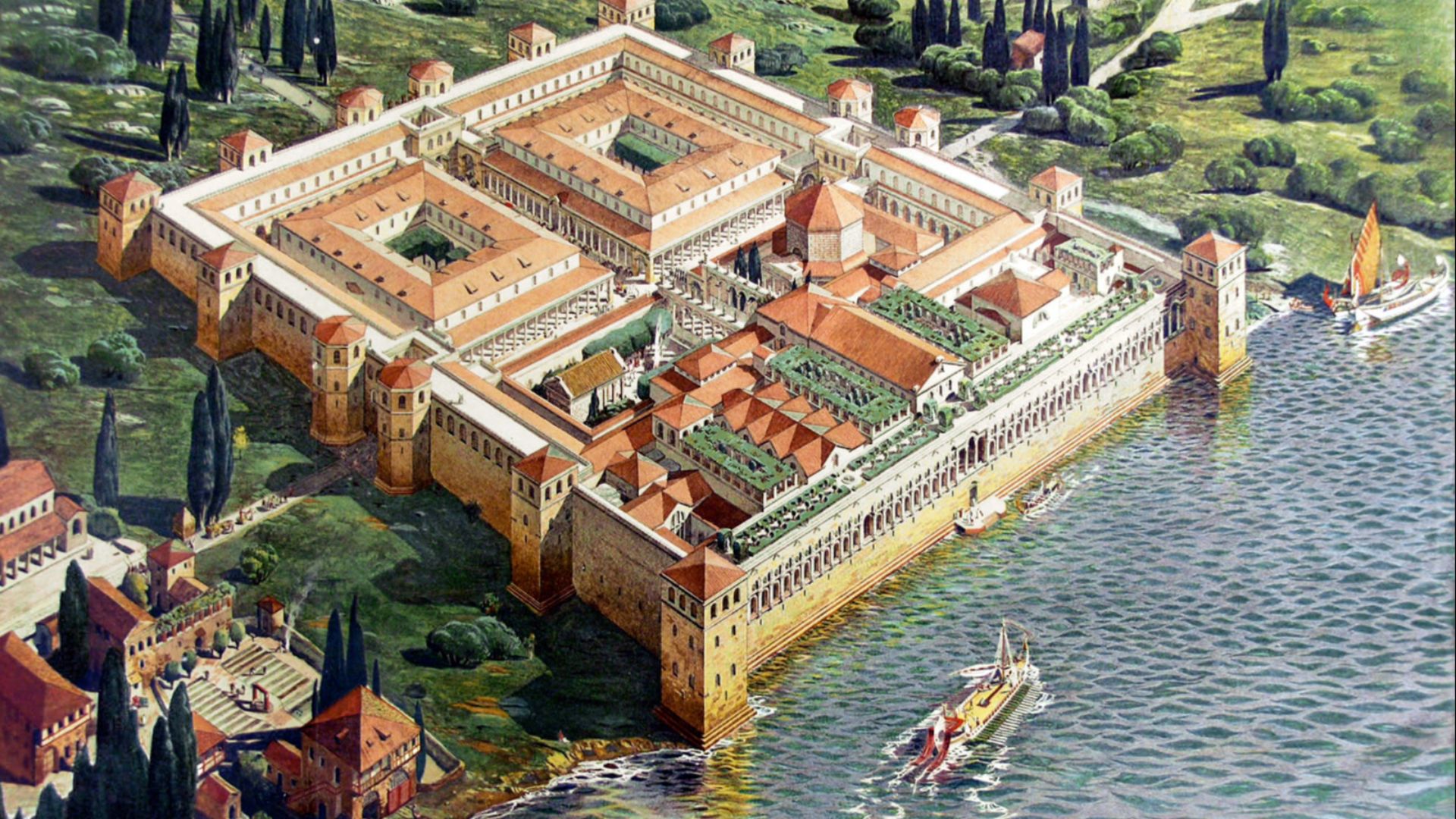 Ernest Hebrard (recoloured by DIREKTOR), Wikimedia Commons
Ernest Hebrard (recoloured by DIREKTOR), Wikimedia Commons
Broader Impact On Roman Studies
This discovery encourages us to reconsider how palaces and forts were designed: logistic tunnels, service corridors and concealed routes may be far more common than we previously realized. It opens up a new list of questions about the relationship between emperor, city and defence.
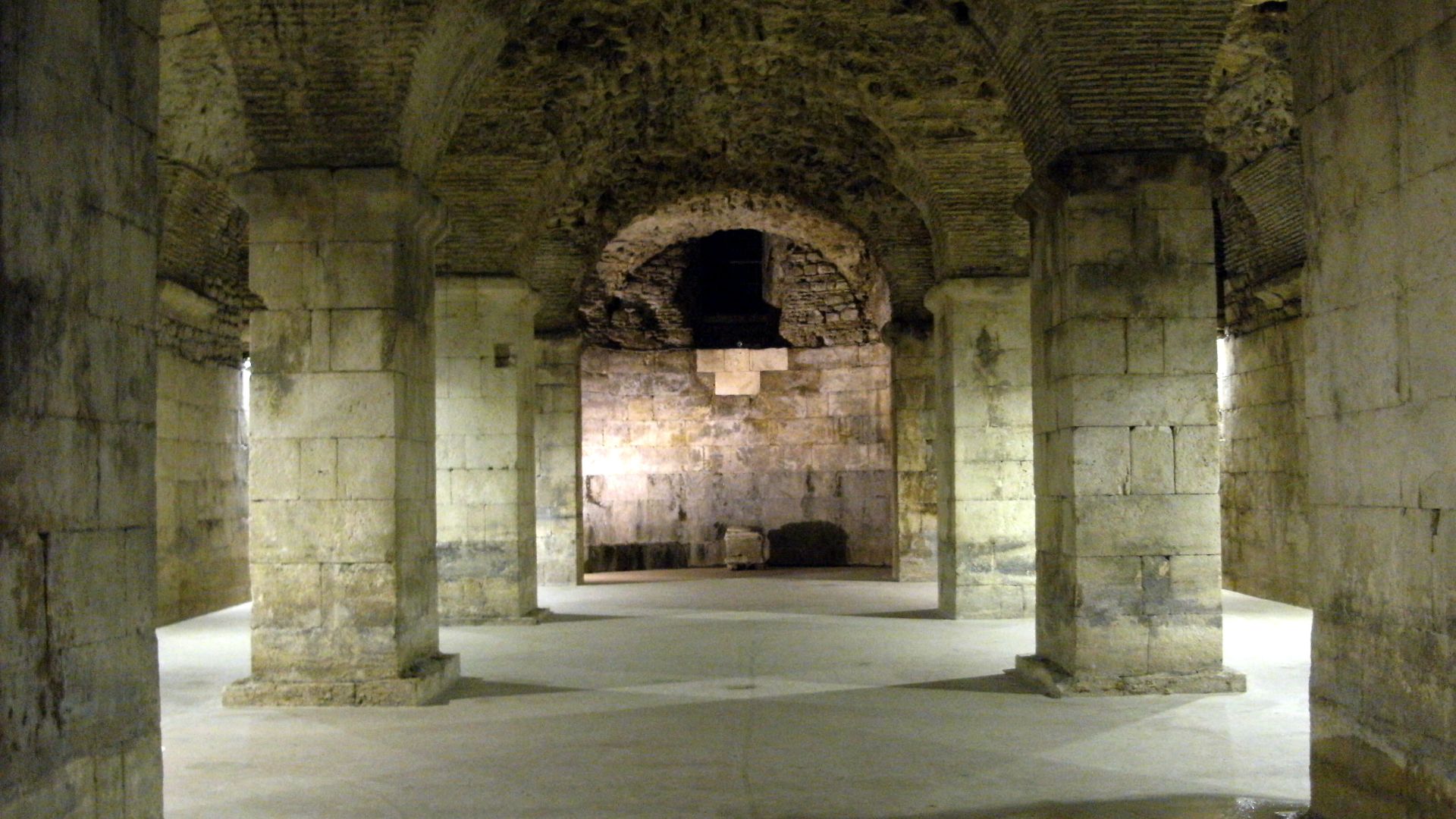 Mark Ahsmann, Wikimedia Commons
Mark Ahsmann, Wikimedia Commons
A Destination And A Story
This discovery is great for travel writers; you can write about walking under the streets of Split, and the descent into a Roman tunnel that once supported an emperor’s life. It adds adventure, authenticity and another unique element to an Adriatic itinerary.
Practical Travel Tips For Visitors
Wear comfortable shoes: the cellar halls are stone‑floored and can be quite damp at times. If possible, visit earlier in the day to avoid crowds. Bring a flashlight just in case the corridor is dimly lit. Stay on marked paths to protect both you and the archaeology.
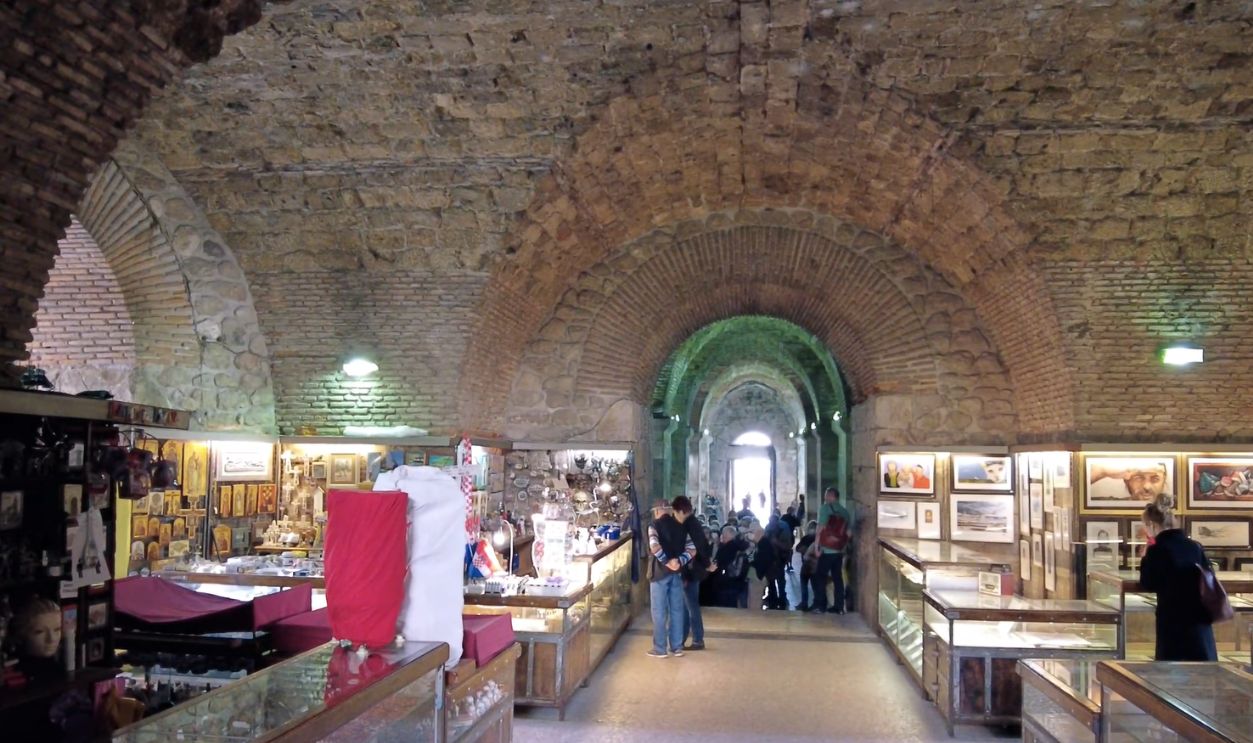 UNDERGROUND TOUR - DIOCLETIAN PALACE | SPLIT, CROATIA, Cityscape Walk
UNDERGROUND TOUR - DIOCLETIAN PALACE | SPLIT, CROATIA, Cityscape Walk
Upcoming Developments For Visitors
Authorities are planning to integrate the passage into the broader palace tour, potentially with virtual reality displays of how the tunnel functioned in Roman and medieval times. Restoration of the adjacent tower is also well underway.
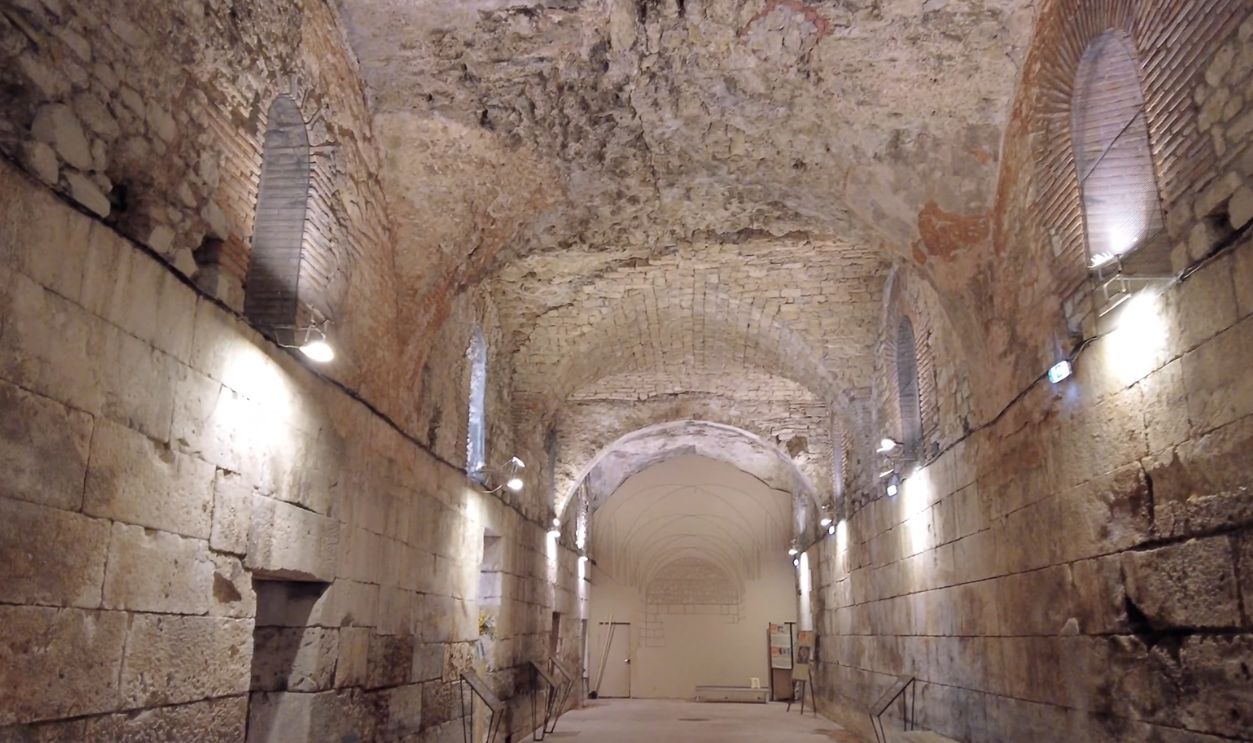 UNDERGROUND TOUR - DIOCLETIAN PALACE | SPLIT, CROATIA, Cityscape Walk
UNDERGROUND TOUR - DIOCLETIAN PALACE | SPLIT, CROATIA, Cityscape Walk
Adding To Split’s Already Rich Heritage
Split already ranks as a UNESCO World Heritage site for its palace complex. The tunnel improves its standing even more by offering an unseen dimension of the architecture and city’s evolution from being a retirement palace to medieval fortified hub to tourist magnet.
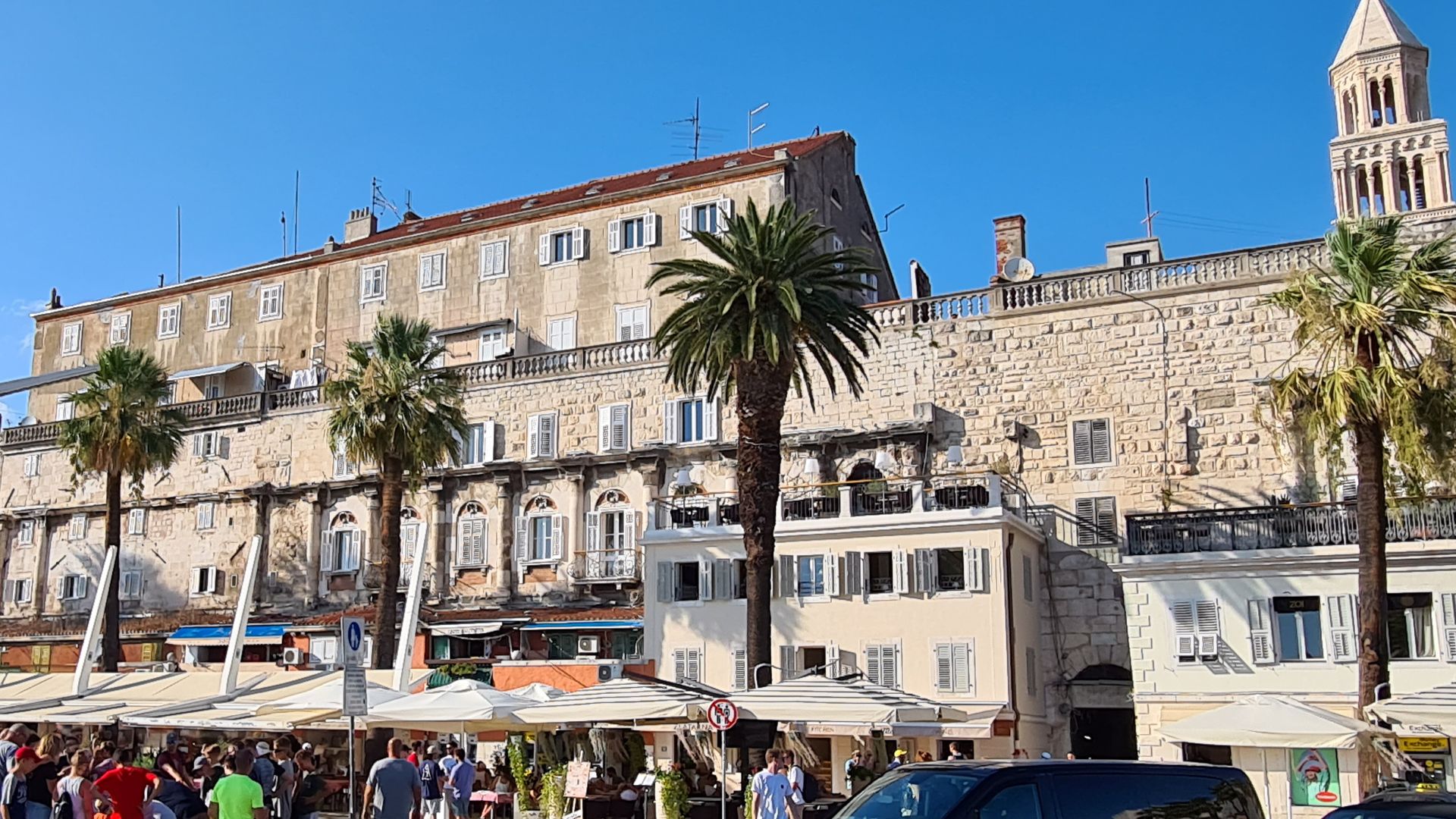 TimeTravelRome, Wikimedia Commons
TimeTravelRome, Wikimedia Commons
Walking In History’s Footsteps
The rediscovery of the subterranean passage beneath Split is an incredible twist of fate. Step off the surface, descend into Roman space, and walk the path of guards, emperors and travellers across two millennia. If you ever make it to Split, you you will finally be able to connect with hidden corridors of time immemorial.
You May Also Like:

